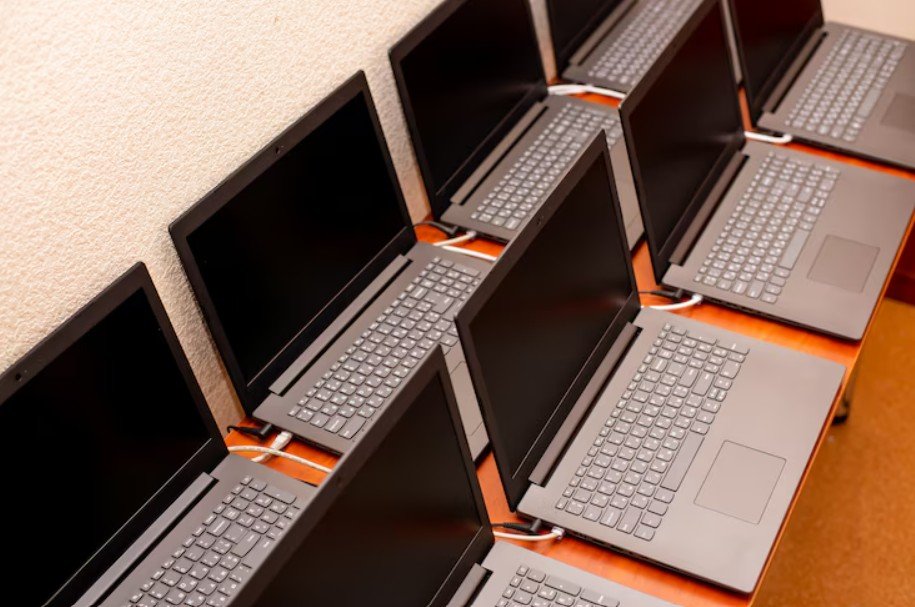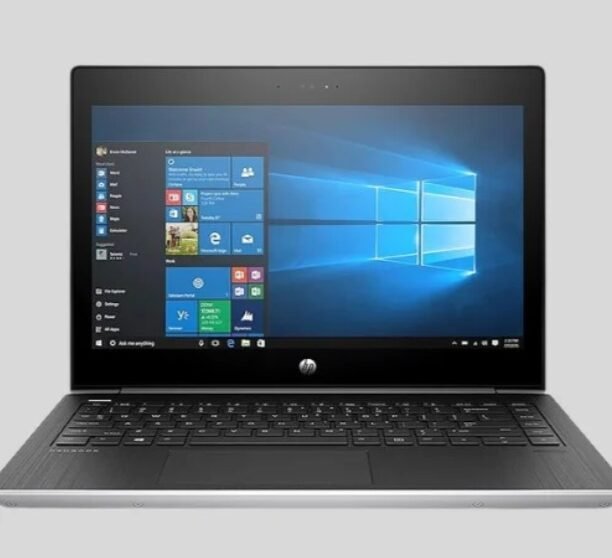Technology is no longer a luxury in today’s world—it is a requirement. From working professionals and college students to small business owners, a reliable laptop is a vital part of daily life. But with new laptops becoming more expensive every year, many buyers are leaning towards pre-owned options as a cost-effective alternative. While the price difference may seem attractive, purchasing a second-hand laptop requires careful consideration. It is not enough to look at the external condition or the brand label; what matters is what lies beneath the surface. Internal specifications, performance, durability, and compatibility with modern applications should all be carefully reviewed before making a decision. A thoughtful comparison between a new laptop and a pre-owned one can help avoid future frustrations and unnecessary expenses. At Nuwara Technology, we see more buyers asking the right questions before investing in pre-owned devices. This growing awareness is particularly visible in regions like Ahmedabad, where affordable computing solutions are in high demand. Whether someone is interested in a Second hand laptop Ahmedabad or a Second hand computer in Ahmedabad, the real value lies in understanding how these devices measure up against their newer counterparts. Let us take a closer look at how one can compare the two thoughtfully and confidently.

More Than Just Numbers: Understanding Real-World Performance
When browsing laptop specifications, it is easy to focus on numbers—clock speeds, RAM sizes, and storage capacities—but numbers alone do not paint the full picture. A processor running at 3.0 GHz on paper may seem fast, but if it belongs to an outdated generation, it may lag behind a newer chip with lower speeds but better architecture. This difference becomes especially important when buying a second-hand laptop.
Performance is not just about what is printed on the box. It is about how smoothly the machine handles tasks in the real world. Does it boot up quickly? Can it open multiple tabs without slowing down? Will it run modern software comfortably? These are practical concerns that go beyond paper specifications.
Comparing a used laptop to a new one requires looking into processor generation, RAM type and speed, SSD versus HDD storage, and whether the operating system is optimized for current workloads. A new laptop will almost always come optimized right out of the box. With a second-hand device, the buyer must consider whether any upgrades will be necessary to achieve similar performance.
The Story Behind the CPU: Age and Efficiency Matter
One of the first components to consider is the processor. While two laptops might advertise the same chip series—say, Intel Core i5—they could be worlds apart in actual performance. A new laptop might have a 12th-generation i5, while the second-hand one could be running a 6th-generation chip. Even within the same branding, newer CPUs benefit from better architecture, energy efficiency, and support for modern software environments.
Second-hand laptops that are three to five years old may still handle basic tasks like browsing, emails, and word processing. However, heavy usage—such as design work, data analytics, or video editing—might push them to their limits. In addition, older CPUs may no longer receive firmware or security updates from the manufacturer, which can expose users to vulnerabilities.
Comparing processor performance using online benchmarks or tools such as PassMark or CPU Boss can offer a more realistic perspective than marketing specs. This helps determine whether a second-hand CPU still holds value today.
RAM: The Unsung Hero of Multitasking
Memory—or RAM—is what allows laptops to handle multiple applications without slowing down. New laptops often come with a minimum of 8 GB of high-speed DDR4 or even DDR5 RAM. They also tend to feature dual-channel architecture, which allows faster and smoother multitasking.
Older laptops may offer only 4 GB of RAM or, worse, may be running DDR3 modules. These are noticeably slower and often insufficient for modern usage. In some second-hand models, the RAM may be soldered to the motherboard, meaning upgrades are not possible.
Before purchasing a used laptop, buyers should check whether the memory can be expanded. Even an older machine can feel much more responsive after a RAM upgrade. However, if upgrades are not possible and the RAM is limited, the system may struggle with even basic productivity tasks in the near future.
Beyond Storage Space: Speed and Reliability Matter
A 1TB hard disk may sound attractive, but the type of storage matters just as much—if not more—than capacity. Most new laptops now ship with Solid State Drives (SSDs), which are far faster, quieter, and more energy-efficient than traditional Hard Disk Drives (HDDs). SSDs drastically reduce boot times, allow faster file transfers, and improve the overall responsiveness of the system.
Many second-hand laptops still rely on older HDDs, which are slower and more prone to failure. Buyers should consider whether the used laptop already has an SSD installed or if one can be added. A used laptop with a smaller SSD will likely offer better real-world performance than one with a larger but slower HDD.
Also, keep an eye on storage health using tools like CrystalDiskInfo. A used drive with high wear levels may fail sooner than expected, which means additional replacement costs in the future.
Screens Speak Volumes: Visual Comfort and Quality
A high-quality display is critical for user experience, especially for those who spend hours working or studying on their laptops. New laptops offer Full HD or higher resolution, better brightness, wider viewing angles, and color accuracy. Their screens are also less prone to burn-in or brightness loss.
Second-hand laptops may come with scratched screens, dimmed backlights, or reduced color accuracy. It is important to inspect a used laptop under different lighting conditions and to test for dead pixels or color distortion. A poor display can lead to eye strain and reduce productivity over time.
Also, consider the size and panel type. IPS panels are preferable for their color reproduction, while older TN panels may look washed out. A few inches in display size may also impact portability and comfort.
The Silent Sufferer: Battery Life in Used Devices
One of the most obvious differences between new and used laptops lies in battery performance. Batteries degrade over time, and a second-hand laptop may offer only a fraction of its original battery life. While new laptops can last 8–12 hours on a single charge, used devices might last only 1–3 hours, depending on usage.
Battery diagnostic tools can reveal the current capacity compared to the original. If the battery is removable, replacing it is relatively simple. But in many modern laptops, the battery is built-in and replacing it can be costly.
It is also worth checking if the laptop supports fast charging or power-saving features. These small but valuable additions are often included in newer models and improve overall usability.
Looks Can Be Deceiving: Condition and Build Quality
While buying second-hand, the physical appearance of the laptop often gives clues about its history. Look closely at the keyboard wear, hinge strength, touchpad response, and port integrity. A well-maintained used laptop should not have loose keys, rattling parts, or wobbly screens.
New laptops come with clean surfaces, smooth typing experiences, and well-calibrated touchpads. In contrast, second-hand devices might show signs of stress—bent USB ports, weak hinges, or cosmetic cracks.
It is essential to test the input devices, webcam, speaker quality, and mic functionality before making a final decision. Cosmetic flaws may be acceptable, but functional flaws are not.
The Software Side: Operating Systems and Licensing
New laptops ship with an activated, licensed copy of the latest operating system—often Windows 11 or macOS Monterey and beyond. They are also optimized for that OS, ensuring smooth updates and performance.
A second-hand laptop, on the other hand, may come with an outdated OS, an expired license, or worse, a pirated version. Always verify whether the laptop has a valid license key and whether the OS receives regular updates.
Also, consider what additional software might be included. New laptops often come with trial versions of productivity suites and antivirus software, while used laptops may not offer these at all. This can add to post-purchase costs.
Networking, Ports, and Modern Compatibility
The number and types of ports have changed significantly over the past few years. While older laptops may have more traditional ports like VGA, Ethernet, and USB 2.0, newer laptops now prioritize USB-C, Thunderbolt, and faster wireless standards like Wi-Fi 6 and Bluetooth 5.2.
This shift can either help or hinder users depending on their existing setup. Buyers must consider how the laptop will be used. For example, if a person depends on external displays or fast file transfers, having the right ports is critical.
Before choosing a second-hand laptop, make sure it offers enough connectivity to match today’s technology needs. Newer standards not only improve performance but also make the device relevant for years to come.
Support and Warranty: Peace of Mind Matters
Buying a new laptop comes with clear advantages in terms of support. Most manufacturers offer 1–3 years of warranty, customer assistance, and replacement policies. In contrast, second-hand laptops rarely include warranty coverage unless bought from trusted dealers like Nuwara Technology.
Some sellers do offer short-term warranties or testing windows, which give buyers some protection. This becomes even more important when purchasing online or from unknown sources.
Always ask for a return policy, proof of original purchase, and any documentation related to service history. These factors increase transparency and reduce the risks involved in buying used devices.
Long-Term View: Upgrade Options and Future Value
Another angle to consider is how easily a laptop can be upgraded or adapted in the future. New laptops offer the latest features that will remain compatible with software updates for at least 4–5 years. Their value depreciates slowly.
Second-hand laptops can still provide strong value, especially if they support upgrades like additional RAM, SSD installation, or improved battery packs. However, the key lies in verifying the upgrade potential before purchase.
A used laptop that supports simple hardware improvements can often match new laptops in performance with minimal investment. This makes them a viable long-term solution, especially for budget-conscious users.
A Balanced Choice: When Does a Second-Hand Laptop Make Sense?
For many buyers, especially students, freelancers, or startups, cost is a driving factor. A second-hand laptop that meets most current performance needs can be a smart financial decision. However, it only makes sense when the condition, configuration, and longevity align with the buyer’s expectations.
The sweet spot is finding a laptop that is two to three years old, with support for modern upgrades and a decent battery. If it comes from a trustworthy source and is well-tested, it can outperform newer budget laptops in real-world usage.
Summary: Compare Thoughtfully, Buy Confidently
Comparing a new laptop to a second-hand one is not just about price—it is about purpose. New laptops offer performance, peace of mind, and warranty coverage. Second-hand devices can provide excellent value if carefully selected and properly maintained. Buyers should evaluate the processor generation, RAM capacity, storage speed, display quality, battery life, software licensing, and overall usability before making a choice.
In cities like Ahmedabad, where tech affordability plays a big role, trusted sellers like Nuwara Technology ensure that every device—whether new or used—meets performance and reliability expectations. People considering a Second hand laptop Ahmedabad or a Second hand computer in Ahmedabad can count on us to guide them to the right product.
Whether you are upgrading your existing device or making your first purchase, take the time to evaluate the specifications that truly matter. At Nuwara Technology, we test every second-hand laptop thoroughly, so you do not have to worry about hidden issues. For quality, reliability, and value, visit today for our collection of certified second-hand laptops and computers. Make the smart move—invest in performance, not just packaging.





